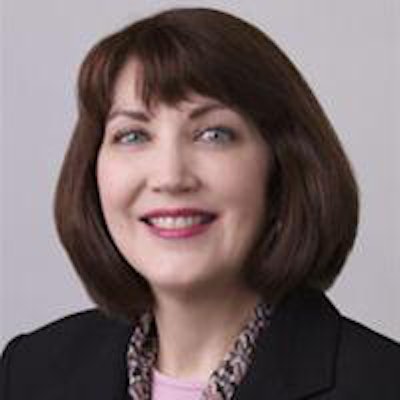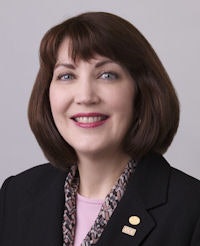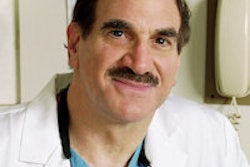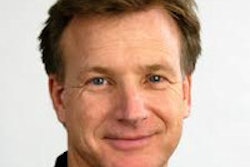
DrBicuspid.com is pleased to present the next installment of Leaders in Dentistry, a series of interviews with researchers, practitioners, and opinion leaders who are instrumental in changing the practice of dentistry.
We interviewed Gayle Glenn, DDS, MSD, who was recently elected president of the American Association of Orthodontists (AAO) -- the first woman ever to be elected to the position -- to learn more about her plans for her new role, her thoughts on women and diversity in dentistry, and how the profession is changing.
She received her Doctor of Dental Surgery from the University of Texas Dental School and her master's degree from Baylor College of Dentistry. Dr. Glenn has previously served as president of the Southwestern Society of Orthodontists and the Texas Association of Orthodontists, as well as on the council on membership of the Texas Dental Association.
DrBicuspid.com: How did you get started in dentistry?
 Gayle Glenn, DDS, MSD.
Gayle Glenn, DDS, MSD.Dr. Glenn: Like many people who are orthodontists or go into dentistry, I had orthodontics myself as a teenager. I had a really bad malocclusion, a bad bite, and terrible teeth. The opportunity to get orthodontic treatment was quite a life-changing event for me. While I was going through treatment, I became interested in what it took to become an orthodontist or a dentist. I started working toward that opportunity in the seventh grade. Now I've been in practice for nearly 30 years.
Was becoming a leader in your field a goal of yours?
It was not a goal at all. It was one of those things that happened. It really wasn't until I was out of dental school and in private practice that I got the opportunity to become active in the local dental society in Dallas.
There was an endodontist who practiced in the same building as I did. He was very active in organized dentistry, and he invited me to become active in the Dallas County Dental Society and got me started with little jobs to do. And I kept saying "yes" and kept showing up, and I got a few more jobs and I found out that I really enjoyed being involved with organized dentistry. The opportunity to work for my profession was very enjoyable, as was the camaraderie with my peers.
How has your previous experience in organized dentistry prepared you for your new role in the AAO?
Early on, I started helping with the regional dental meeting -- the Southwest Dental Conference. I loved getting involved with the planning and putting on the conference. That has been good training for me because in 1998 I was asked to be the local arrangements chairman for the AAO Annual Session when it was held in Dallas. And that, in turn, has helped me prepare for the 2014 AAO Annual Session next April in New Orleans.
Working with these dental groups has also allowed me to become aware of many membership issues. Recruiting and encouraging member participation have always been near and dear to my heart and a good stepping stone to where I am right now.
What key changes have you seen in the profession during your time as an orthodontist, and what do you see on the road ahead?
One thing that has changed drastically over the last 30 years is something I call the changing face of orthodontics. We see so much more diversity now in orthodontics, including our dental and healthcare providers, dental school faculty, staff and team members that work with us, and our patients. That has been really rewarding to me as a woman who used to be a minority in dentistry. And there have been more opportunities in general for patients from diverse backgrounds to seek orthodontic care.
How can the profession continue to adapt to these changes?
Sometimes we have to be aware and flexible in knowing what our team members need and want because there are differences that are generational- and gender-related. I'm talking about the type of work people want, the amount of hours and days our staff want to work, and whether they want owner responsibilities or an employment arrangement. We have to be open and realize that dentistry is not the same as it was 30 years ago; it's not everyone in their own little office. We're seeing a lot of group practices and a lot more corporate-owned practices. We need to be aware of these different employment opportunities and offer services that can benefit people no matter what their practice modality may be.
The other big change is technology -- in our computer systems, business management systems, scheduling, and delivery of patient care. Also in the digital world we live in as far as radiographs, study models (casts), diagnostic tools, etc. This reliance on technology has increased the costs to open and operate a dental or orthodontic office.
How will these technological changes factor into your approach as president?
At our regional meetings and at the AAO Annual Session over the last two years, we have dedicated one of our educational tracks to new technologies, such as cone-beam CT and digital chairside scanners.
This next year, as simple as it sounds, we're going to have some hands-on computer classes -- not only for the orthodontists, but for their staff and team members. Because I feel like they want to keep up on the latest technology and because a lot of times, dentists and orthodontists look to our staff to be on the leading edge of implementation, not just purchasing decisions.
With so many new things out there, we try as best we can to gather evidence-based information to present at our meetings so that people know if this is a useful and valuable new tool or if it's just something that may come forward but prove not to be that beneficial in practices. We try to present that type of information as well.
Dentists are often cautious when it comes to new technology -- many have been burned by the "latest and greatest" but unproven technologies.
Right -- so you talk to friends and colleagues and those in the universities and see what the satisfaction levels have been. It's changing so rapidly and there's so much out there and so much of the marketing is done by the manufacturers, so it's nice to have a point and counterpoint perspective presented.
Have you found it challenging to balance your focus between these different practice environments?
I have, and it's going to be even more of a challenge in the future. Again, the needs are different: everything from how much information a dentist or orthodontist needs on practice management, marketing, overhead control -- things like that really depend on whether they're in a private practice, a group practice, or a corporate-owned practice. We need to provide more varied information.
You mentioned the changing face of dentistry and clearly, you've been a part of that. How have things changed for women in the profession since you've entered it?
When I entered dentistry, about 3% of the dentists in the U.S. were women. It's well over 20% now. It doesn't seem like it's a big change, but it is because there were so many years when it was mostly a male profession. Right now, our dental school classes are close to being 50% men and 50% women. I think it's at 46% women nationally. Over time, we'll see that gap narrowing and the percentage of women increasing. It's much more accepted and no longer a novel idea for women to go into dentistry.
It's a wonderful profession for women because, depending on where you are in your life, you can work less or more, you can be flexible with your scheduling for taking care of children or elderly parents, or whatever the responsibilities may be. It's a wonderful career, and I think a lot of women are realizing that and entering the profession.
Any final thoughts?
At the AAO, we work at having good relationships with the ADA and other specialty groups, even other healthcare organizations such as the Association of School Nurses, because we see that the very best care that we can provide for our patients is by working with those in general dentistry, pediatric dentistry, or other specialties. As orthodontic specialists, we're only a piece of the puzzle, and we realize that the better the relationships are with these organizations in dentistry and related healthcare organizations, the better our care is for the public, our patients. Identifying common areas of interest to better serve our patients is key.
In February of next year, we're putting on a winter conference in Las Vegas, Adult Treatment: the Clinical Conference for Orthodontists and Restorative Dentists. This again is a way we're reaching out and trying to collaborate more with our colleagues so that we know what's new in restorative dentistry and they know what's new in orthodontics, so together we can gain more knowledge and provide better care.


















